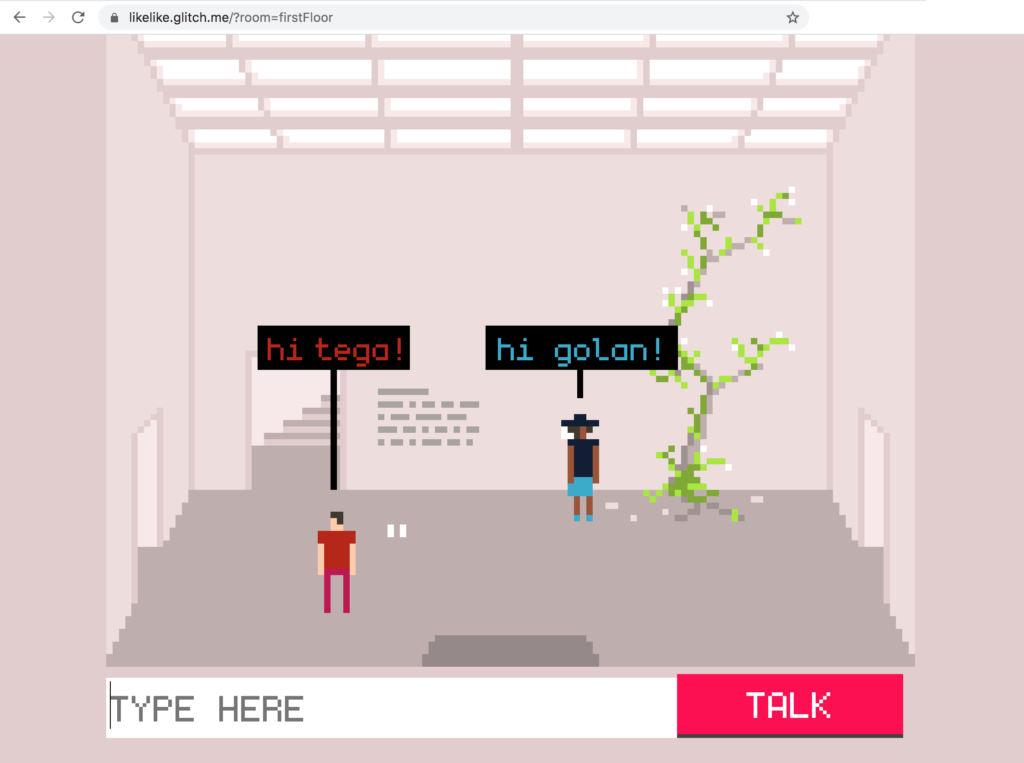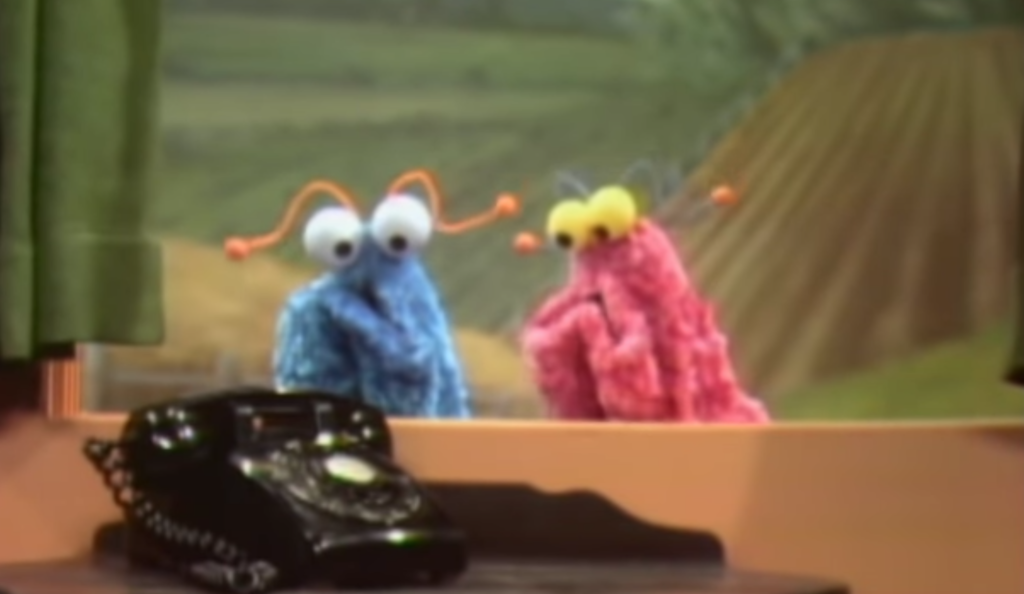
Art Across Distances • New Modes of Communication
We begin a unit on Telematic Art: networked systems that allow people in different locations (and potentially, at different times) to communicate or collaborate in a new way.
We now consider interactive systems that place the participant/guest/user/subject into conversation with other mind(s). In creating a communication system between multiple interlocutors, we establish a new interactivity: that between siblings, lovers, neighbors, strangers.
As soon as there was an Internet, there was art on the Internet. Immediately there arose two approaches: creators who used the Internet as a new way of disseminating traditional media (photography, music, etc.) in online galleries; and creators of “Net.Art”, who made Internet-native artworks whose forms intrinsically depended on the networked condition.
While networked systems like Zoom, Minecraft and Google Docs are part of the fabric of everyday life, this hasn’t always been so. It’s worth stepping back and thinking about the use of networked telecommunications in media arts. As is often the case, some media artworks from the past presaged common tools today… and others represent intriguing dead-ends in the history of attempts to devise new modes of communication.
Older Lecture on Telematic Art
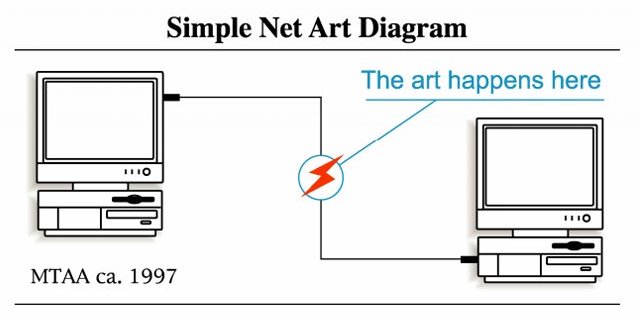
In the projects below, questions how each project resolves issues of:
- Critical consideration of the nature of networked communication
- One-to-one, One-to-many, many-to-many, many-to-one
- Incorporation of the participant’s labor (user-generated media)
- Asynchronous vs. synchronous communication
- Equal roles vs. complementary roles
- Inhabiting a shared virtual space
- Which senses are engaged
- Anonymity and intimacy
- Verbal vs. nonverbal
- Synchronous vs. asynchronous
- Denotative vs. connotative (literal vs. evocative)
- Simplex vs. half-duplex vs. full duplex
(e.g. radio vs. walkie-talkie vs. telephone)
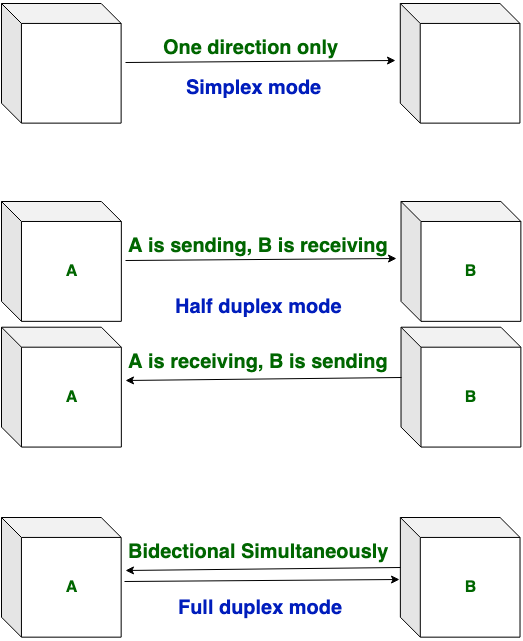
Beginnings
Moholy-Nagy, László. Telephone Picture. 1923. Porcelain enamel on steel, 18 3/4 x 11 7/8″. https://www.moma.org/collection/works/78747. The first use of telecommunications as an artistic medium occurred in 1923 when the Hungarian constructivist artist László Moholy-Nagy made Telephone Pictures. These works were produced by an enamel factory in Weimar, Germany, according to instructions given by the artist. Moholy-Nagy later wrote that he placed the order by telephone. These works questioned the idea of the isolated individual artist, and the unique art object.
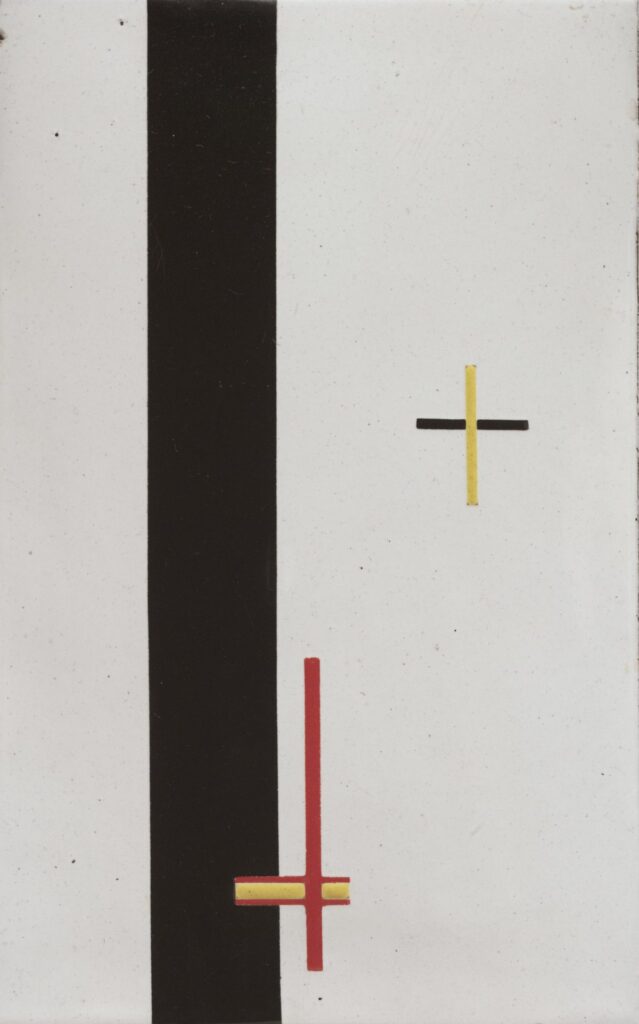
Collective Memory & Asynchronous Communication
Across deep time: the Chauvet Cave paintings (40KY BCE). We will watch a portion of The Cave of Forgotten Dreams by Werner Herzog, from 29:58 – 32:45 (purchase required). Regarding two artists, 5000 years apart, who ‘collaborated’ on the same drawing, Herzog remarks: “We are locked in history, and they were not.”
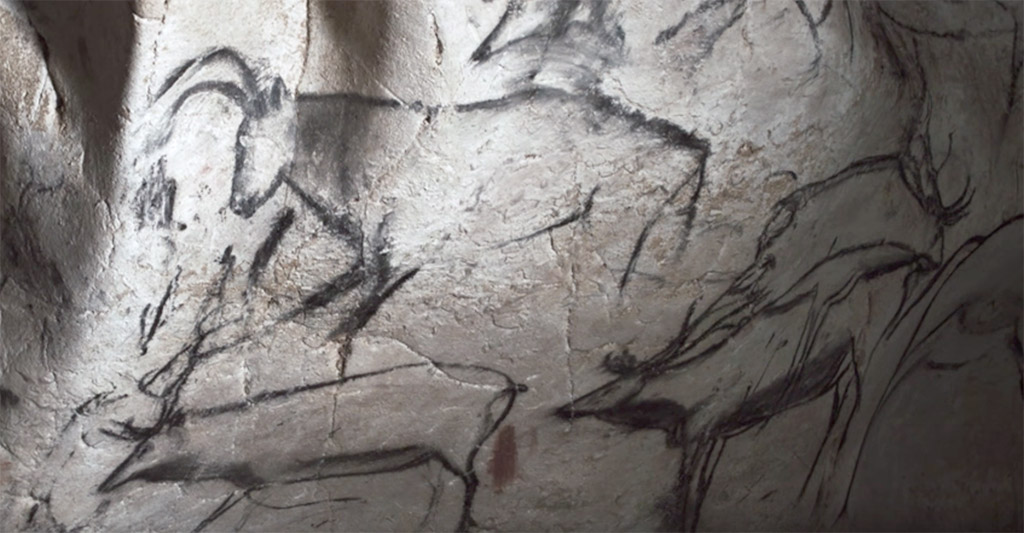
Cairns are human-made piles of stones. Cairns have been and are used for a broad variety of purposes, from prehistoric times to the present, often as landmarks, memorials and trail markers. It is a collaboratively created structure, built one stone at a time, often over the course of centuries.
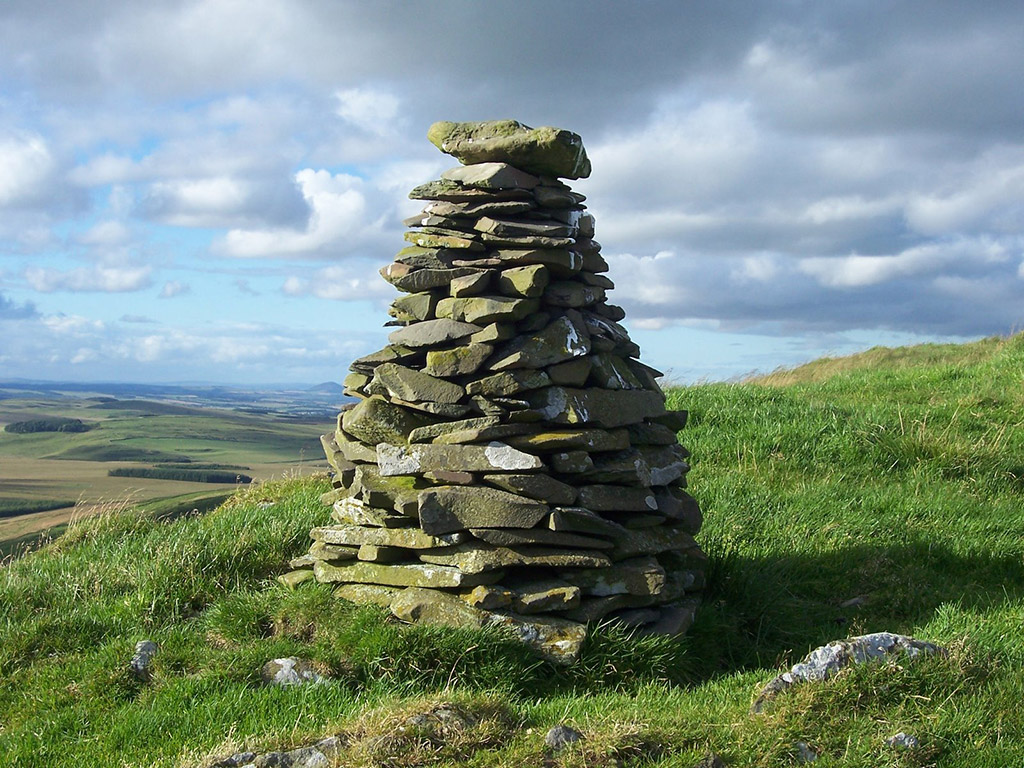
Yoshihara, Jirō. Please Draw Freely. 1956. Paint and marker on wood, 200 x 450 x 3 cm. Please Draw Freely is a large free-standing board on which you are free to draw whatever and however you want. Created by Yoshihara Jirō in 1956, artists of all ages are welcome to draw, scribble, and sketch. Yoshihara was the leader of the Gutai group of radical Japanese artists who wanted to change the world through painting, performance and children’s play.
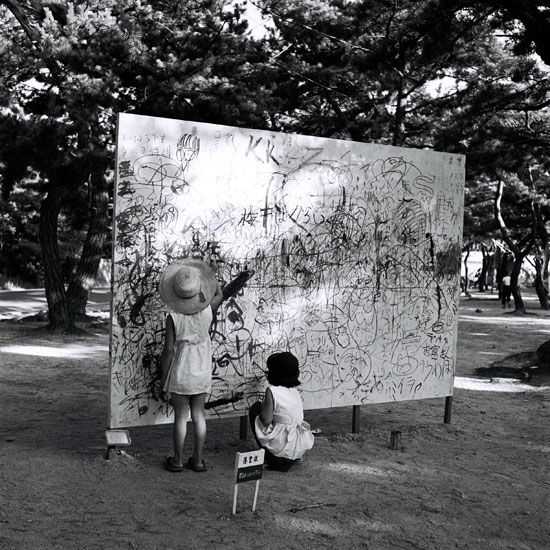
Ono, Yoko. Wish Tree. 1996. Interactive installation. http://imaginepeacetower.com/yoko-onos-wish-trees. Wish Tree is an ongoing art installation series by Yoko Ono, started in 1996, in which a tree native to a site is planted under her direction. Viewers are invited to tie a written wish to the tree. To honor the wish writers’ privacy, Ono claims she does not read the wishes, and collects them all to be buried at the base of the Imagine Peace Tower on Videy Island in Iceland. To date over 1 million wishes have been buried beneath the tower.
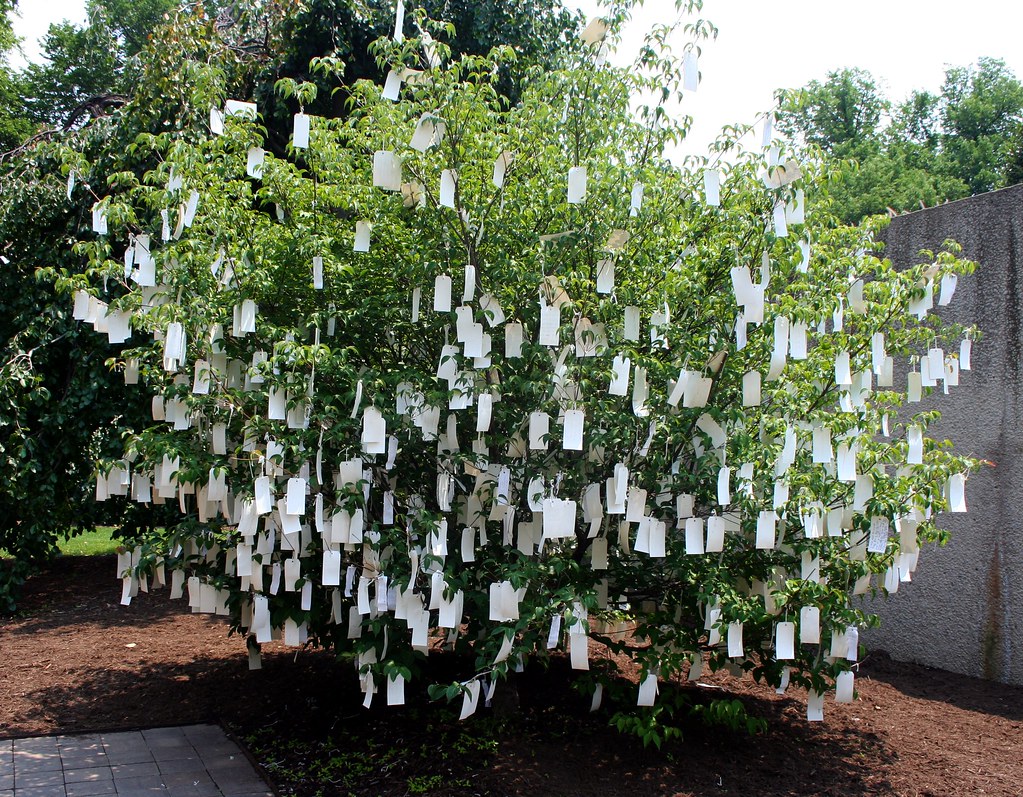
Kusama, Yayoi. The Obliteration Room. 2002. Interactive installation. https://www.youtube.com/watch?v=-xNzr-fJHQw&t=7s.
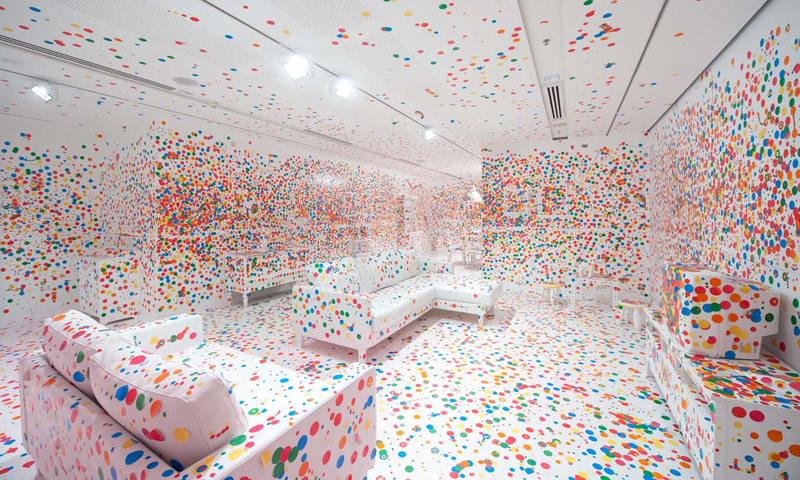
In Dead Drops (2010), Aram Bartholl creates an offline file-sharing service by covertly mounting USB storage devices throughout a city. If a passerby connects their computer to one of the USB drives, they can download whatever information prior visitors have contributed, or upload new files of their own.
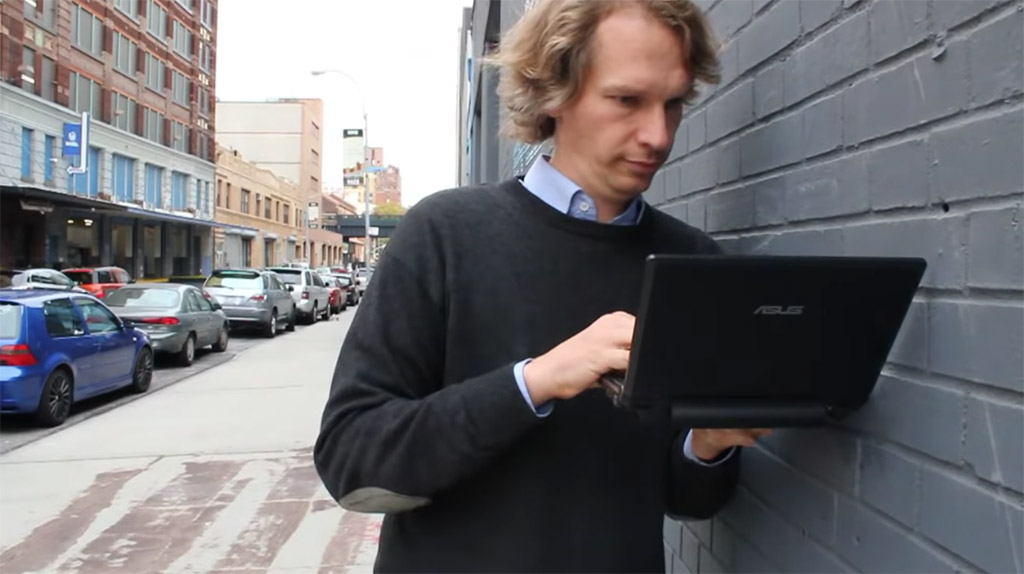
Goldberg, Ken, and Santarromana, Joseph. Telegarden. 1995. Collaborative garden with industrial robot arm. Ars Electronica Museum, Linz, Austria. http://ieor.berkeley.edu/~goldberg/garden/Ars. An art installation that allows web users to view and interact with a remote garden filled with living plants. Members can plant, water, and monitor the progress of seedlings via the tender movements of an industrial robot arm. The Telegarden went online in June 1995. In its first year, over 9000 members helped cultivate. It remained online until August 2004.
Napier, Mark. net.flag. 2002. Online app for flag design. https://www.guggenheim.org/artwork/10703.

Davis, Kevan. Typophile: The Smaller Picture. 2002. Collaborative pixel art gallery. Typophile is a website wherein visitors are prompted to contribute to the design of a letterform, such as the letter ’A’. Each visitor’s creative options are tightly restricted: their only choice is to decide whether a given pixel, in a 20×20 grid, should be black or white. The letterform’s grid is initialized with random noise. Gradually, as members of the crowd contribute decisions about individual pixels, a collectively designed typeface is produced. https://kevan.org/smaller.cgi.
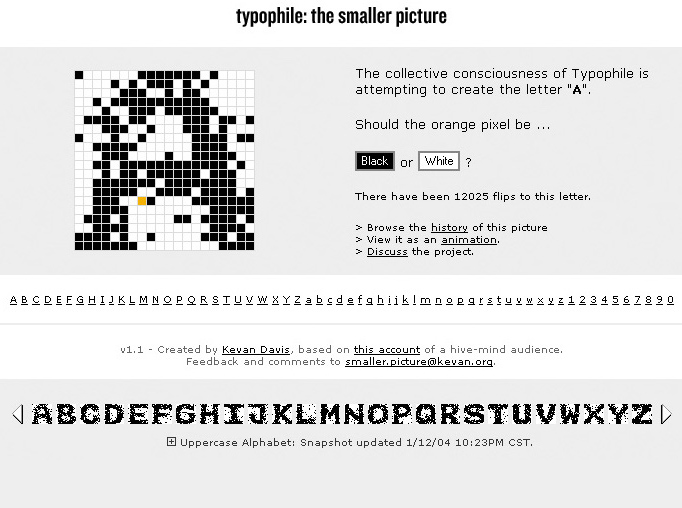
July, Miranda, and Harrell Fletcher. Learning to Love You More. 2002–2009. Assignments and crowdsourced responses. http://www.learningtoloveyoumore.com. (see #23: “Recreate this Snapshot“)

Badr, Andrew. Your World of Text. 2009. Collaborative online text space. https://www.yourworldoftext.com. Andrew Badr’s Your World of Text is an infinite grid of text editable by any visitor. “The changes made by other people appear on your screen as they happen. Everyone starts in the same place, but you can scroll through the world using your mouse. They all start off blank. You can also create a custom world for you and your friends.”

Roopa Vasudevan’s Sluts across America (2012) is a compilation of user-submitted messages advocating for reproductive freedoms, geolocated and displayed on a U.S. map.
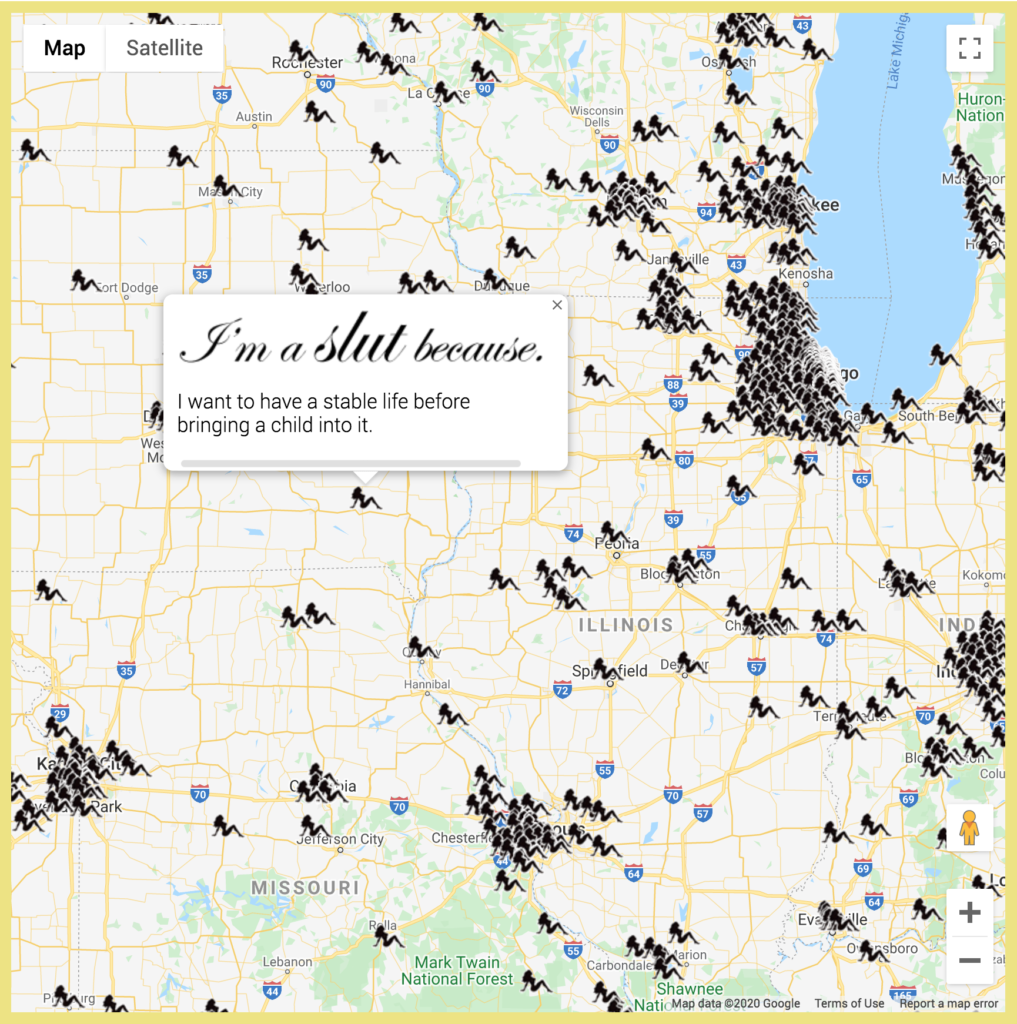
Studio Moniker (Luna Maurer & Roel Wouters). Do Not Touch. 2013. Interactive crowdsourced music video. https://studiomoniker.com/projects/do-not-touch. A crowdsourced music video. Visitors to an interactive web application listen to a song, during which they receive simple instructions on how to move their mouse cursor (“Catch the green dot”). Thus orchestrated, these cursor movements are recorded and then played back in sync with the song.
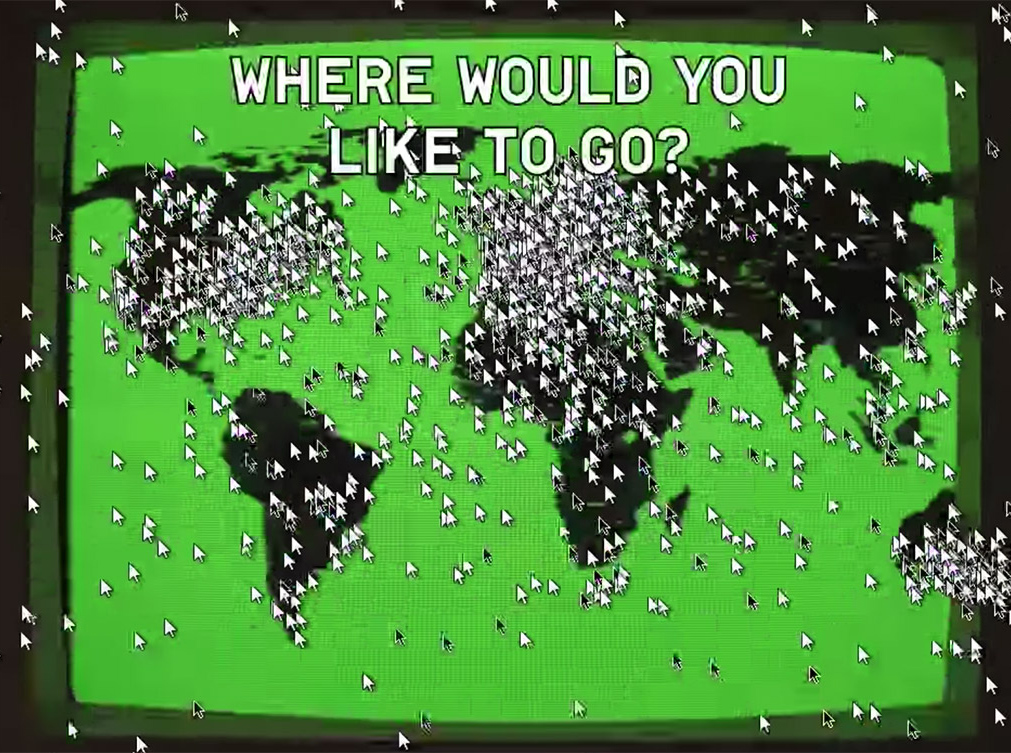
In Exhausting a Crowd (2015), Kyle McDonald invites online audiences to annotate a 12-hour video recording of a public place with their own observations of the scene. Inspired by Georges Perec’s 1974 experimental literary work An Attempt at Exhausting a Place in Paris, McDonald opens up a process of close observation to a broad public, crowdsourcing the discovery and preservation of moments that might otherwise go unnoticed. https://www.exhaustingacrowd.com/london.
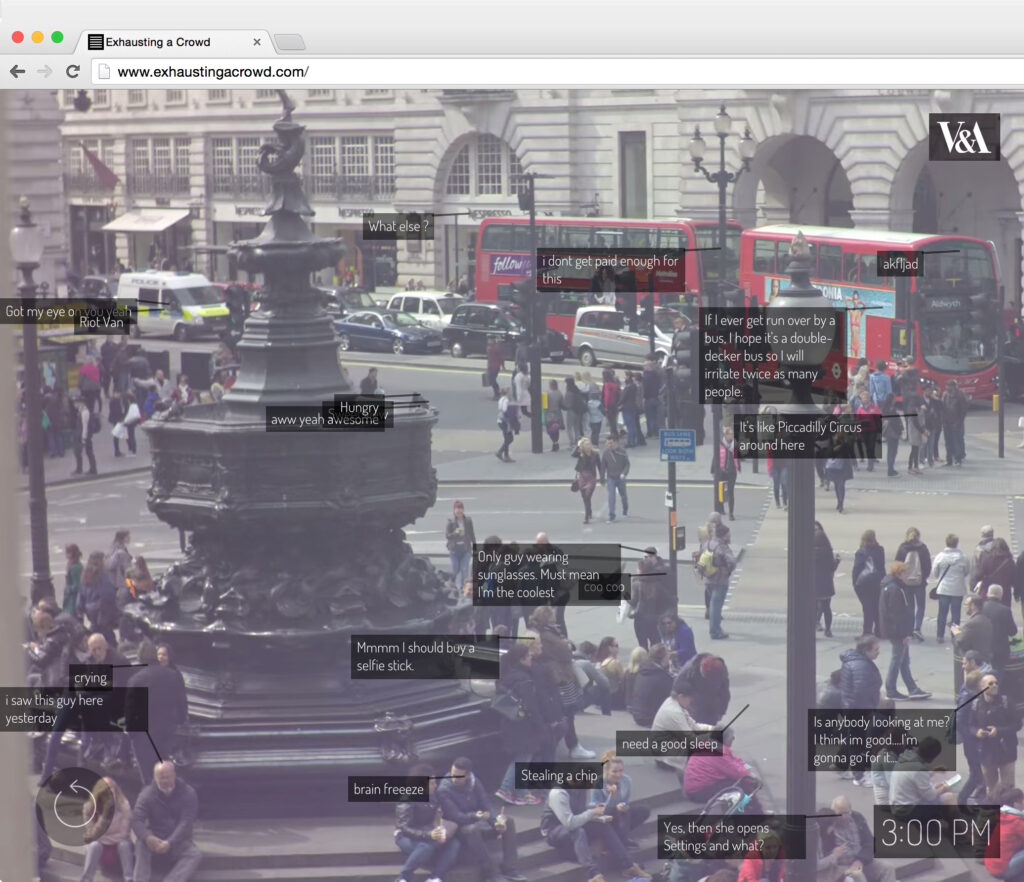
Reddit. /r/place. 2017. Crowdsourced pixel art. https://reddit.com/r/place. R/Place was a 1000×1000 pixel collaborative canvas hosted on Reddit. During a 72-hour period in April 2017, registered users could edit the canvas by selecting the color of a single pixel from a 16-color palette. Because each user could only alter one pixel every five minutes, crowds developed elaborate methods to collectively draw images, write messages, create flags, and overwrite the contributions of others.
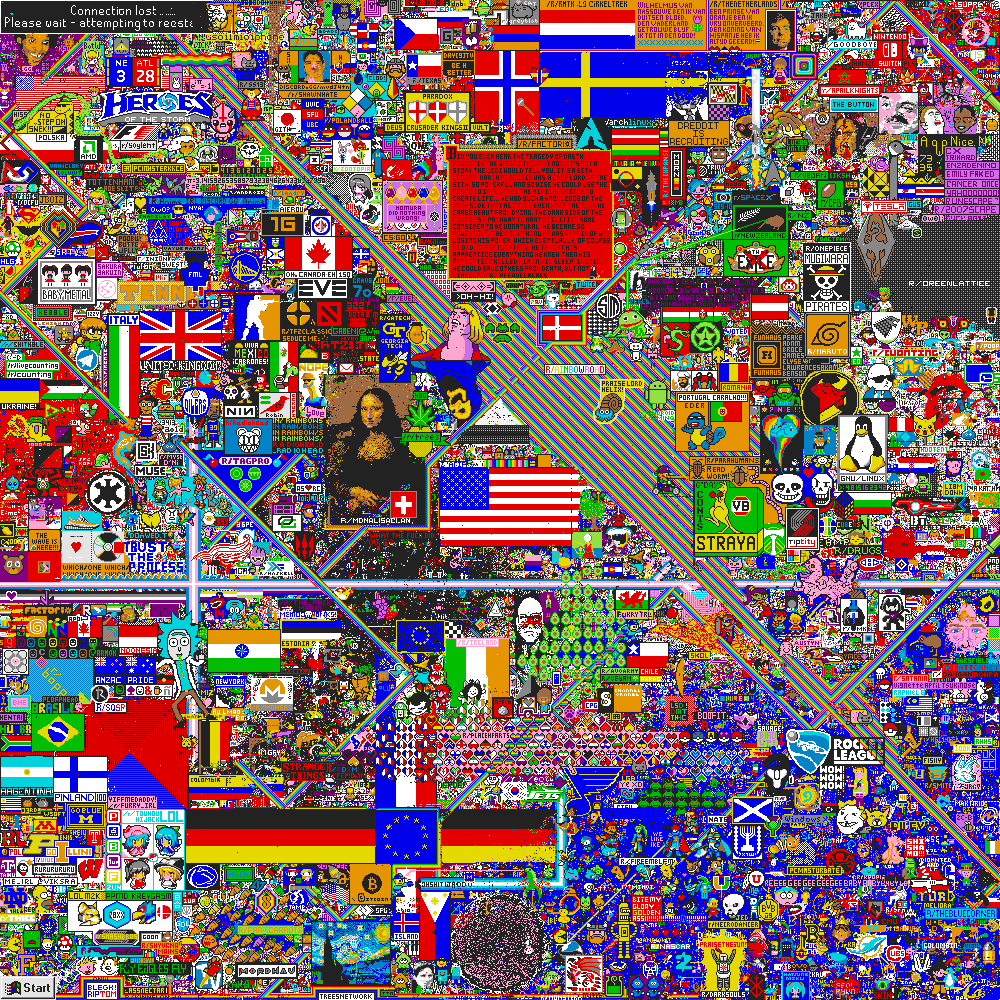
Sokpop Collective. sok-worlds. 2020. Multiplayer collage. https://sokpop.itch.io/sok-worlds. sok-worlds is a game/tool where you make and explore 3d collage worlds. Search a big library of images and add them to your world. Assemble them, cut them out, add text, add some music and create all kinds of cool, weird places to explore!
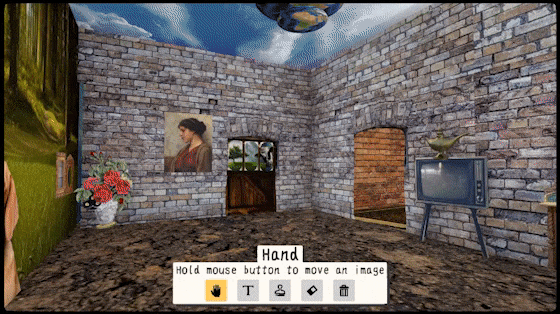
Collaborative drawing programs:
- Mr.Doob, Multiuser Sketchpad (2020)
(Synchronous) Experimental Chat: New Ways of Being Together
Galloway, Kit, and Sherrie Rabinowitz. Hole in Space. 1980. Public communication sculpture. http://y2u.be/SyIJJr6Ldg8. Hole in Space (1980), a “communication sculpture” by Kit Galloway and Sherrie Rabinowitz, used live two-way video to connect street-level pedestrians in Los Angeles and New York City.
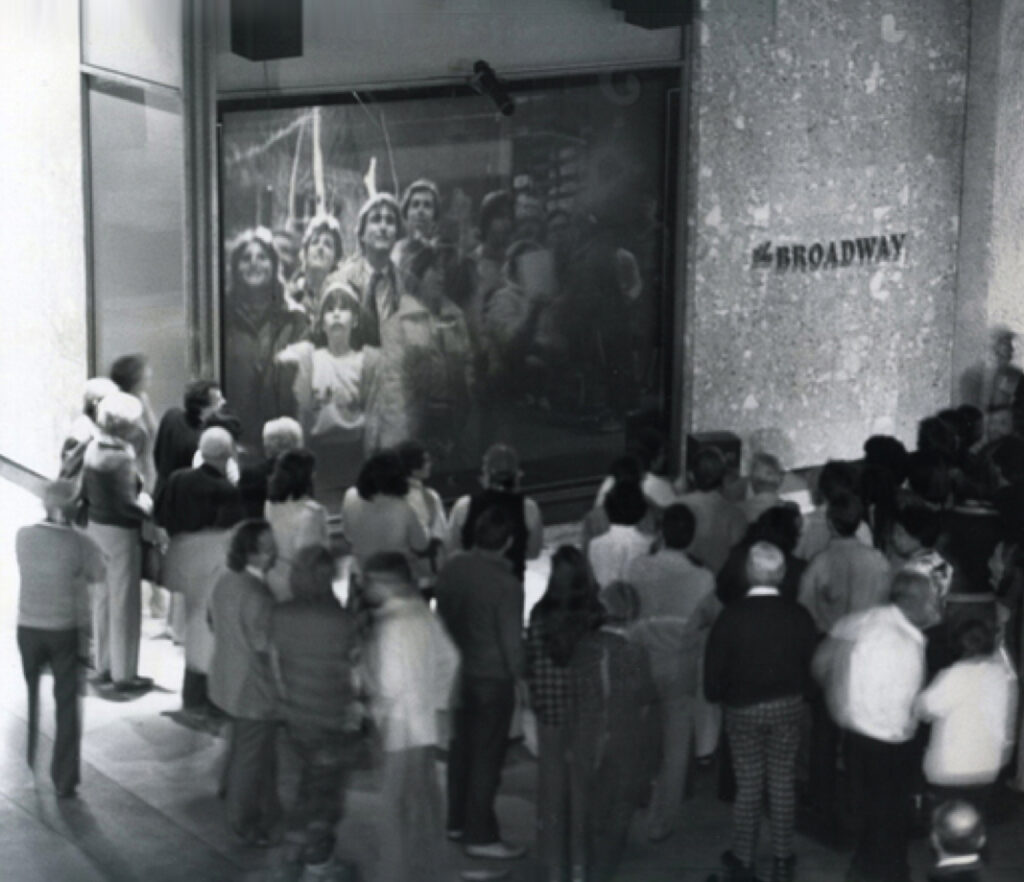
Sermon, Paul. Telematic Dreaming. 1992. Live telematic video installation. http://www.hgb-leipzig.de/~sermon/dream. “a pair of installations that function as customized video-conferencing systems. A double bed is located within both locations, one in a blacked out space and the other in an illuminated space. The bed in the light location has a camera situated directly above it, sending a live video image of the bed, and a person (“A”) lying on it, to a video projector located above the other bed in the blacked out location. The live video image is projected down on to the bed with another person (“B”) on it. A second camera, next to the video projector, sends a live video image of the projection of person “A” with person “B” back to a series of monitors that surround the bed and person “A” in the illuminated location. The telepresent image functions like a mirror that reflects one person within another person’s reflection.”
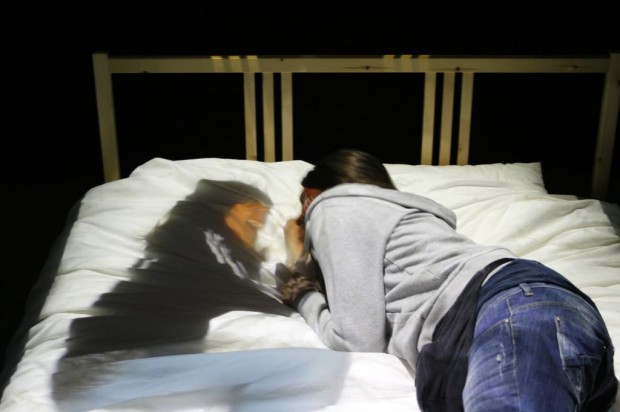
Lozano-Hemmer, Rafael. The Trace. 1995. Interactive telepresence installation. http://www.lozano-hemmer.com/the_trace.php. In The Trace (1995), a participant encounters the moving, ghostlike “presence” of another person, who is located in an identical but separate room. Their presence is conveyed by a glowing spot created by a pair of intersecting beams of light.
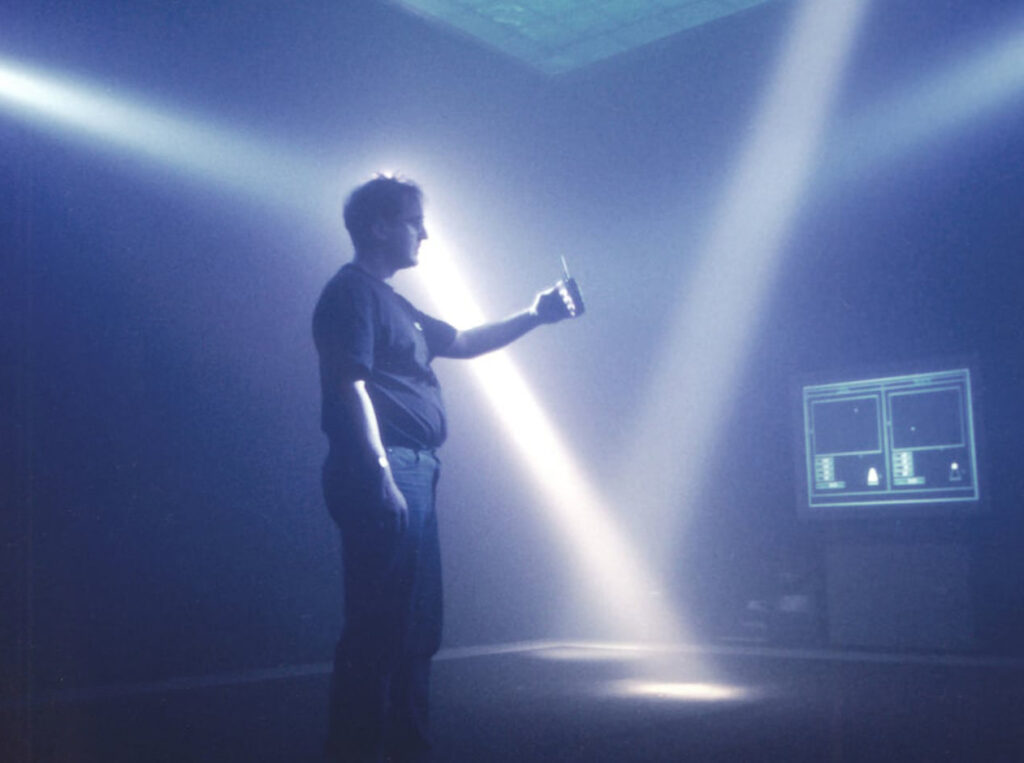
Snibbe, Scott. Motion Phone. 1995-2012. Interactive software for abstract visual communication. https://www.snibbe.com/projects/interactive/motionphone. “a new form of communication and a creative game. It lets people make abstract animations together, over a network, in a unique combination of conversation and creation. In MotionPhone’s shared infinite canvas, people can create unlimited variations of movement by recording the gestures from their fingertips. When connected to other players, MotionPhone lets you create, comment, play, and communicate visually with others.”
inTouch (Scott Brave & Andrew Dahley, 1998) is a project to explore new forms of interpersonal communication through touch. Force-feedback technology is employed to create the illusion that people, separated by distance, are interacting with a shared physical object. The “shared” object provides a tactile link between geographically distributed users, opening up a channel for physical expression over distance.
(MIT’s Tangible Media Group has researched tactile telepresence since the mid-1990s. This project is from 2015):
Brucker-Cohen, Jonah. BumpList. 2003. Email list. http://www.bumplist.net. Jonah Brucker-Cohen’s BumpList (2003) is “an email community for the determined”. BumpList “functions like a standard, public listserv, but adds the constraints of limited membership (only 6 people could subscribe at once) and the urgency of forcing people to re-subscribe if they get bumped and want to continue the conversations, discussions, arguments in which they are engaged.”
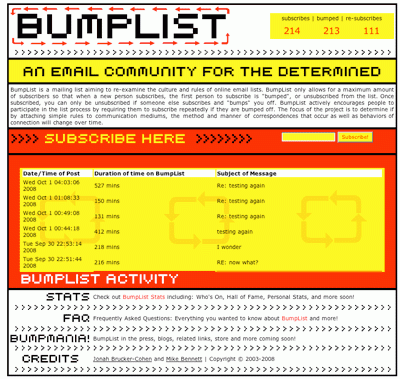
Bilal, Wafaa. Domestic Tension. 2007. Interactive video installation. http://wafaabilal.com/domestic-tension. Bilal confined himself to a gallery space for 30 days. Over the duration, people had 24-hour virtual access to the gallery space via the Internet. They could watch Bilal and interact with him through a live webcam and chat room. Should they choose to do so, viewers could shoot Bilal with a paintball gun, transforming the virtual experience into a very physical one. Bilal’s self imposed confinement was designed to raise awareness about the home confinement Iraqis faced during the Iraq war.
Fong-Adwent, Jen, and Soledad Penadés. Meatspace. 2013. Ephemeral chatroom with animated GIFs. https://chat.meatspac.es/. Meatspace (2013) by Jen Fong-Adwent and Soledad Penadés is an ephemeral conversation space in which participants’ written messages are accompanied by animated GIF loops, instantaneously captured from their webcams.
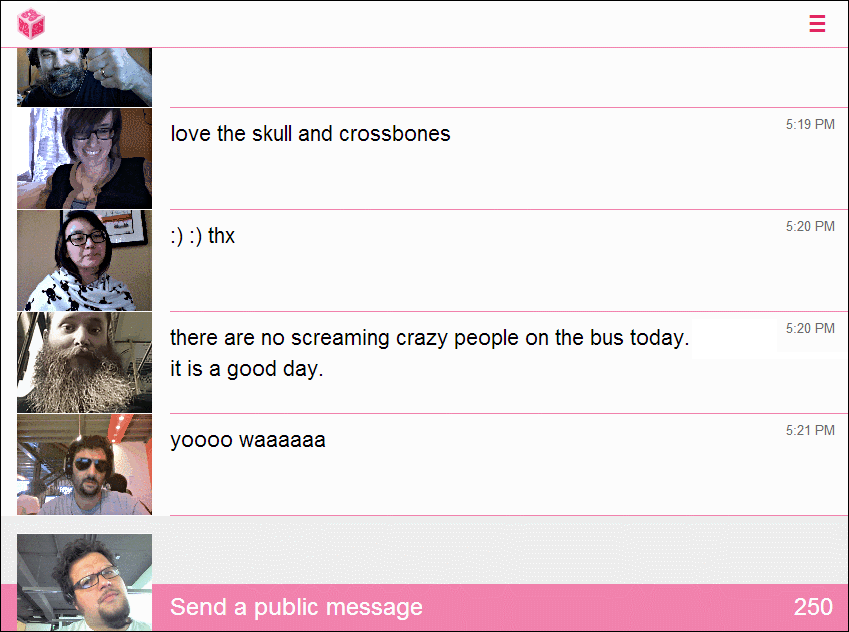
Dinahmoe. _plink. 2011. Multiplayer online instrument. http://dinahmoelabs.com/_plink/.
Agar.io (Matheus Valadares, 2015) and the related Slither.io are compelling multiplayer games that are astonishingly well-tuned. Very different strategies are required depending on one’s current size/score.
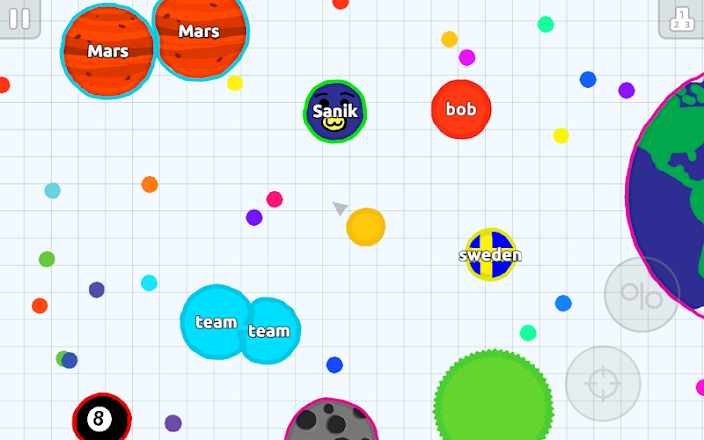
Zach Gage’s Can We Talk? (2011) “is a chat program for having serious conversations. It attempts to disambiguate the reasons for silence in online conversation, while preserving the qualities that make text chatting a unique platform for communication.”
Hawkins, Max (BCSA 2013). Call in the Night. 2013. Phone call service. http://callinthenight.com. For a class project, Max wrote software that connected unsuspecting subscribers between 2:00 and 5:00 AM to discuss their dreams.
McCarthy, Lauren. Social Turkers. 2013.
System for crowdsourced relationship feedback. http://socialturkers.com. “What if we could receive real-time feedback on our social interactions? Would unbiased third party monitors be better suited to interpret situations and make decisions for the parties involved? How might augmenting our experience help us become more aware in our relationships, shift us out of normal patterns, and open us to unexpected possibilities? I am developing a system like this for myself using Amazon Mechanical Turk, a crowd labor service. During a series of dates with new people I meet on the internet, I will stream the interaction to the web using an iPhone app. Amazon Mechanical Turk workers will be paid to watch the stream, interpret what is happening, and offer feedback as to what I should do or say next. This feedback will be communicated to me via text message.”
July, Miranda. Somebody. 2014. Messaging service. http://somebodyapp.com. “Conceived as an art work, created with an design company, and launched with a companion film, the app that asked strangers to deliver messages between friends exploded in ways we couldn’t have foreseen. Despite the ridiculous challenges, one in four messages were delivered, and an average of ten thousand people used the app every day for 14 months.”
Horvitz, David. The Space Between Us. 2015. App. https://rhizome.org/editorial/2015/dec/09/space-between-us.
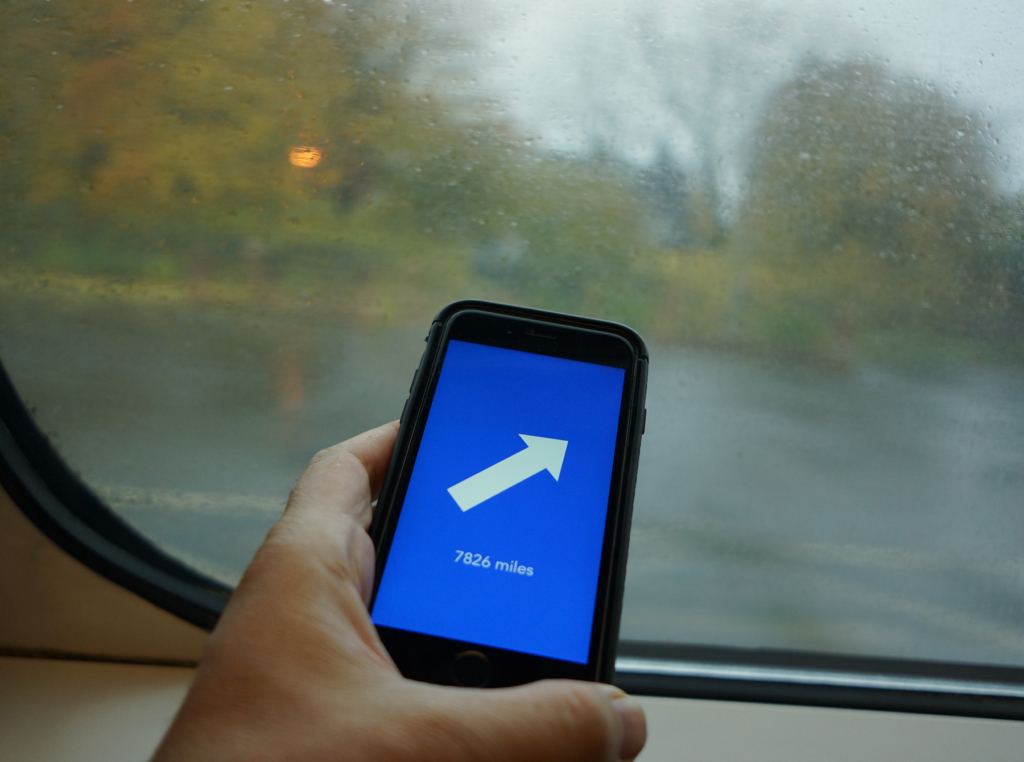
Depoorter, Dries, and David Surprenant. Die With Me. 2018. Mobile chat app. https://diewithme.online.
TenthBit Inc. ThumbKiss (now Couple). 2013. https://en.wikipedia.org/wiki/Couple_(app). A mobile network-for-two; Couples in remote locations align their thumbprints in a shared, 2D virtual screenspace.
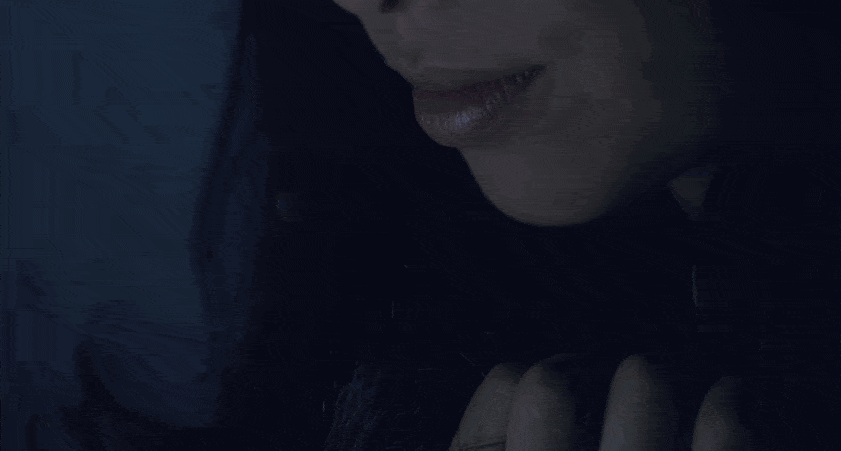
Zhu, Jingwen. Real Me. 2015. Chat app with biometric sensors. http://www.jingwen-zhu.com/real-me. “A chatting app with BLE connected muscle sensor, pulse sensor and vibration sensor. It tracks the user’s emotion while chatting and using system messages to tell the ‘real emotion’ of the user. Sensor readings also draw out geometric motion graphics as the background of the chatting room. The user’s heart rate is mapped to the color of the speech bubble, their smile triggers animated particles, and leg shaking triggers the shaking of speech bubbles.” (Zhu)
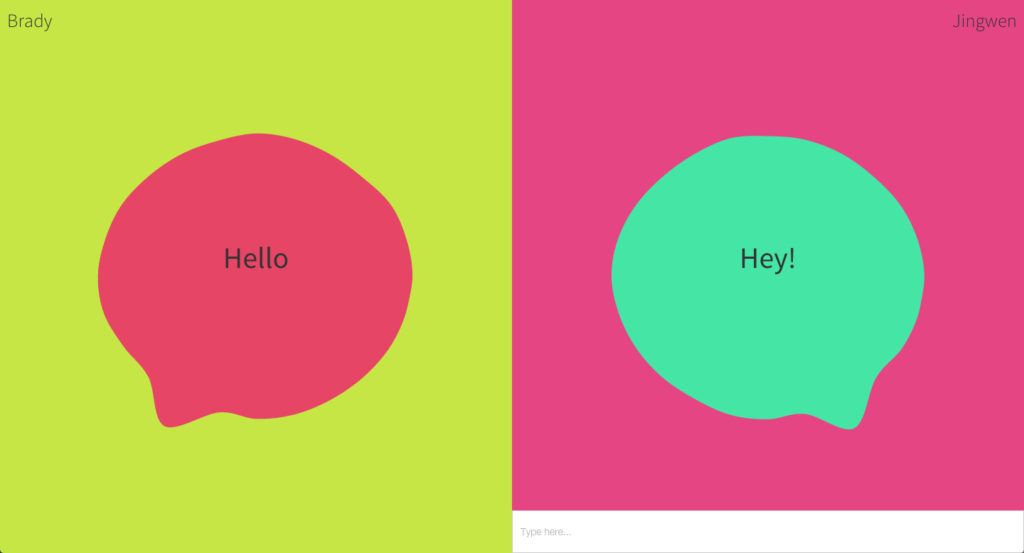
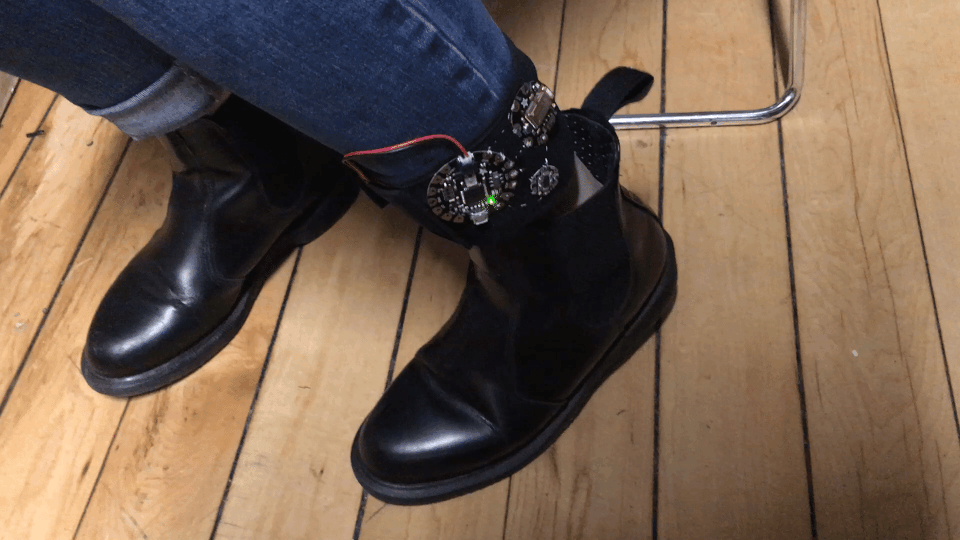
60-212 student, Maddy Varner’s (BFA 2016) POOPCHAT PRO (2015) is a feces-based chatroom in which you are a blob who is literally just talking shit. You can hover over the poops to scry their meaning, and you can drag your blobby body around the board to find exciting new places to poop. Poopchat is nonlinear in nature, ephemeral in practice, and constantly requiring you to flush it all down the drain due to inefficient for-loops.
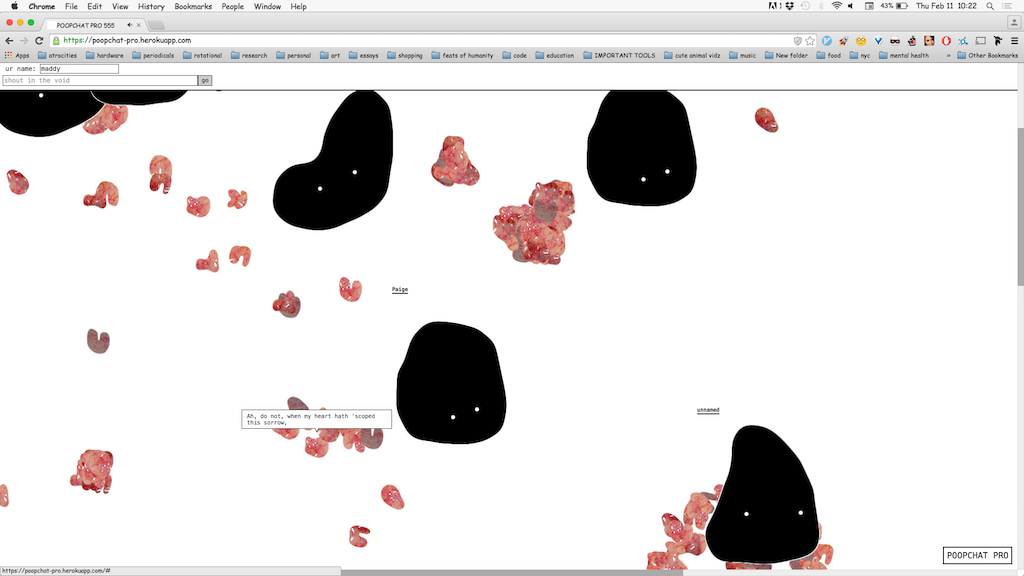
- Poopchat Pro – A chatroom in which participants communicate with small poops
- Pasties – A chatroom in which participants communicate exclusively by copy-pasting.
Pedercini, Paolo. Online Museum of Multiplayer Art. 2020. Collection of chatrooms with interaction constraints. https://likelike2.glitch.me/?room=firstFloor. The Online Museum of Multiplayer Art (2020), a virtual wing of Paolo Pedercini’s LIKELIKE neo-arcade, features “playful environments that interrogate our notions of mediated sociality and digital embodiment.” Among the museum’s many conceptually oriented chat installations is the “Censorship Room” in which “each word can only be uttered once and never again.”
